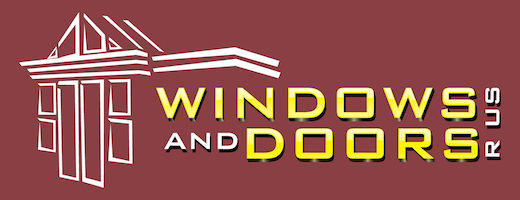
Karl Burnett
Understanding UPVC Windows and Doors: The Ultimate Guide
Recently, the popularity of UPVC (unplasticized polyvinyl chloride) windows and doors has actually surged, and for great reason. These items offer a perfect blend of performance, design, and resilience, making them a perfect option for property owners and builders alike. This article looks into the different elements of UPVC windows and doors, exploring their advantages, costs, upkeep, and frequently asked questions.
What is UPVC?
UPVC is a type of plastic that is widely used in the building industry, especially for window and door frames. Unlike regular PVC, UPVC does not include plasticizers, which makes it rigid and suitable for structural applications. The material is resistant to moisture and ecological deterioration, giving it a longer life expectancy compared to conventional materials like wood and metal.
Advantages of UPVC Windows and Doors
Durability: UPVC is extremely resistant to rot, rust, and fading, making it an outstanding option for climates with extreme weather conditions.
Energy Efficiency: UPVC frames can assist enhance the energy efficiency of homes. They are outstanding insulators, which suggests they can help in reducing heating & cooling expenses.
Low Maintenance: Unlike wooden frames that may need regular painting and sealing, UPVC can simply be cleaned up with soap and water, preserving its look with minimal effort.
Affordable: Although the preliminary investment might be greater than aluminum or wooden alternatives, the long life expectancy and low maintenance requirements of UPVC make it a more affordable choice over time.
Aesthetically Pleasing: UPVC doors and Windows Doors Upvc (Xajhuang.Com) come in different styles and colors, making sure house owners can find an option that complements their home.
Table 1: Comparison of UPVC with Other MaterialsFunctionUPVCWoodAluminumSturdinessHighly resilientProne to rot & & decayRust resistantEnergy EfficiencyOutstanding insulationModerate insulationExcellent insulationMaintenanceLow maintenanceHigh maintenanceModerate maintenanceExpense (Initial)Moderate to highHighModerateLook OptionsWide array readily availableNatural finishesModern finishesKinds Of UPVC Windows and Doors
UPVC products can be found in various designs to suit various architectural styles and personal choices. Some typical types consist of:
Windows:Casement Windows: Hinged at the side, these windows open outward, providing exceptional ventilation.Sliding Windows: These windows operate on a track, enabling easy opening and closing.Sash Windows: Featuring sliding panes, sash windows provide a conventional look and functionality.Tilt and Turn Windows: Versatile in style, these windows can tilt for ventilation or turn completely for simple cleaning.Doors:UPVC Front Doors: Designed to offer security and insulation, these doors are available in various styles.French Doors: These double doors open outside and create a seamless link to outside areas.Sliding Patio Doors: Ideal for maximizing views and natural light, these doors operate efficiently along a track.Bi-fold Doors: These doors can fold back to develop an open space, best for amusing or linking indoor and outdoor locations.Advantages of UPVC Doors and Windows
Increased Security: UPVC doors and windows are often fitted with multi-point locking systems, making them a safe and secure choice for homes.
Sound Reduction: The insulation residential or commercial properties of UPVC aid in lowering noise pollution, creating a quieter indoor environment.
Ecologically Friendly: UPVC is recyclable, making it a sustainable choice for ecologically mindful customers.
Personalized: With alternatives for various colors, finishes, and hardware, UPVC items can be tailored to match any home decor.
Setup Process
The setup of UPVC doors and windows is important for ensuring their performance and longevity. Here are the key steps associated with the installation process:
Measurement: Accurate measurements of the existing openings are taken.
Preparation: The old frames are gotten rid of, and the area is cleaned and prepped for the new setup.
Positioning: The new UPVC frames are positioned, ensuring they fit comfortably within the openings.
Sealing: The frames are sealed using appropriate sealing products to avoid drafts and water ingress.
Ending up: Final adjustments are made to ensure the windows and doors operate smoothly, and any complements are included.
Upkeep Tips for UPVC Windows and Doors
To keep UPVC doors and windows in great condition, the following maintenance ideas are recommended:
Regular Cleaning: Use a moist fabric or sponge with moderate soap to wipe down the frames and glass surface areas. Avoid harsh chemicals that can damage the product.
Examine Seals and Locks: Regularly inspect the sealing and locking systems to guarantee they are functioning correctly.
Lubricate Moving Parts: Use a silicone-based lube on hinges and locks to keep them operating efficiently.
Check for Damage: Periodically inspect for any noticeable damage or use to resolve concerns before they escalate.
Frequently Asked Questions About UPVC Windows and Doors
For how long do UPVC windows and doors last?
UPVC doors and windows can last upwards of 20 years with appropriate upkeep.
Are UPVC items energy efficient?
Yes, UPVC offers exceptional insulation properties, which can significantly enhance energy effectiveness in homes.
Can UPVC windows be painted?
While UPVC can be painted, it's usually not suggested, as this might void service warranties and affect the material's integrity.
Are UPVC items recyclable?
Yes, UPVC is recyclable, making it an ecologically friendly choice.
Can I install UPVC windows and doors myself?
While DIY setup is possible, it is suggested to employ professionals for proper and safe and secure setup.
In summary, UPVC doors and windows offer a myriad of benefits that make them a smart financial investment for house owners. Their durability, energy effectiveness, low maintenance needs, and vast array of styles place them as an appealing option in the market. Understanding the qualities and benefits of UPVC can help customers make informed choices when upgrading or constructing their homes. As sustainability continues to end up being increasingly essential, materials like UPVC will remain at the leading edge of modern-day building and construction.
Recently, the popularity of UPVC (unplasticized polyvinyl chloride) windows and doors has actually surged, and for great reason. These items offer a perfect blend of performance, design, and resilience, making them a perfect option for property owners and builders alike. This article looks into the different elements of UPVC windows and doors, exploring their advantages, costs, upkeep, and frequently asked questions.
What is UPVC?
UPVC is a type of plastic that is widely used in the building industry, especially for window and door frames. Unlike regular PVC, UPVC does not include plasticizers, which makes it rigid and suitable for structural applications. The material is resistant to moisture and ecological deterioration, giving it a longer life expectancy compared to conventional materials like wood and metal.
Advantages of UPVC Windows and Doors
Durability: UPVC is extremely resistant to rot, rust, and fading, making it an outstanding option for climates with extreme weather conditions.
Energy Efficiency: UPVC frames can assist enhance the energy efficiency of homes. They are outstanding insulators, which suggests they can help in reducing heating & cooling expenses.
Low Maintenance: Unlike wooden frames that may need regular painting and sealing, UPVC can simply be cleaned up with soap and water, preserving its look with minimal effort.
Affordable: Although the preliminary investment might be greater than aluminum or wooden alternatives, the long life expectancy and low maintenance requirements of UPVC make it a more affordable choice over time.
Aesthetically Pleasing: UPVC doors and Windows Doors Upvc (Xajhuang.Com) come in different styles and colors, making sure house owners can find an option that complements their home.
Table 1: Comparison of UPVC with Other MaterialsFunctionUPVCWoodAluminumSturdinessHighly resilientProne to rot & & decayRust resistantEnergy EfficiencyOutstanding insulationModerate insulationExcellent insulationMaintenanceLow maintenanceHigh maintenanceModerate maintenanceExpense (Initial)Moderate to highHighModerateLook OptionsWide array readily availableNatural finishesModern finishesKinds Of UPVC Windows and Doors
UPVC products can be found in various designs to suit various architectural styles and personal choices. Some typical types consist of:
Windows:Casement Windows: Hinged at the side, these windows open outward, providing exceptional ventilation.Sliding Windows: These windows operate on a track, enabling easy opening and closing.Sash Windows: Featuring sliding panes, sash windows provide a conventional look and functionality.Tilt and Turn Windows: Versatile in style, these windows can tilt for ventilation or turn completely for simple cleaning.Doors:UPVC Front Doors: Designed to offer security and insulation, these doors are available in various styles.French Doors: These double doors open outside and create a seamless link to outside areas.Sliding Patio Doors: Ideal for maximizing views and natural light, these doors operate efficiently along a track.Bi-fold Doors: These doors can fold back to develop an open space, best for amusing or linking indoor and outdoor locations.Advantages of UPVC Doors and Windows
Increased Security: UPVC doors and windows are often fitted with multi-point locking systems, making them a safe and secure choice for homes.
Sound Reduction: The insulation residential or commercial properties of UPVC aid in lowering noise pollution, creating a quieter indoor environment.
Ecologically Friendly: UPVC is recyclable, making it a sustainable choice for ecologically mindful customers.
Personalized: With alternatives for various colors, finishes, and hardware, UPVC items can be tailored to match any home decor.
Setup Process
The setup of UPVC doors and windows is important for ensuring their performance and longevity. Here are the key steps associated with the installation process:
Measurement: Accurate measurements of the existing openings are taken.
Preparation: The old frames are gotten rid of, and the area is cleaned and prepped for the new setup.
Positioning: The new UPVC frames are positioned, ensuring they fit comfortably within the openings.
Sealing: The frames are sealed using appropriate sealing products to avoid drafts and water ingress.
Ending up: Final adjustments are made to ensure the windows and doors operate smoothly, and any complements are included.
Upkeep Tips for UPVC Windows and Doors
To keep UPVC doors and windows in great condition, the following maintenance ideas are recommended:
Regular Cleaning: Use a moist fabric or sponge with moderate soap to wipe down the frames and glass surface areas. Avoid harsh chemicals that can damage the product.
Examine Seals and Locks: Regularly inspect the sealing and locking systems to guarantee they are functioning correctly.
Lubricate Moving Parts: Use a silicone-based lube on hinges and locks to keep them operating efficiently.
Check for Damage: Periodically inspect for any noticeable damage or use to resolve concerns before they escalate.
Frequently Asked Questions About UPVC Windows and Doors
For how long do UPVC windows and doors last?
UPVC doors and windows can last upwards of 20 years with appropriate upkeep.
Are UPVC items energy efficient?
Yes, UPVC offers exceptional insulation properties, which can significantly enhance energy effectiveness in homes.
Can UPVC windows be painted?
While UPVC can be painted, it's usually not suggested, as this might void service warranties and affect the material's integrity.
Are UPVC items recyclable?
Yes, UPVC is recyclable, making it an ecologically friendly choice.
Can I install UPVC windows and doors myself?
While DIY setup is possible, it is suggested to employ professionals for proper and safe and secure setup.
In summary, UPVC doors and windows offer a myriad of benefits that make them a smart financial investment for house owners. Their durability, energy effectiveness, low maintenance needs, and vast array of styles place them as an appealing option in the market. Understanding the qualities and benefits of UPVC can help customers make informed choices when upgrading or constructing their homes. As sustainability continues to end up being increasingly essential, materials like UPVC will remain at the leading edge of modern-day building and construction.
Made By Tag To Connect
 Italian
Italian
 हिन्दी
हिन्दी
 Arabic
Arabic
 Chinese
Chinese
 English
English
 French
French
 German
German
 Portuguese
Portuguese
 Russian
Russian
 Spanish
Spanish
 Turkish
Turkish
 Vietnamese
Vietnamese
